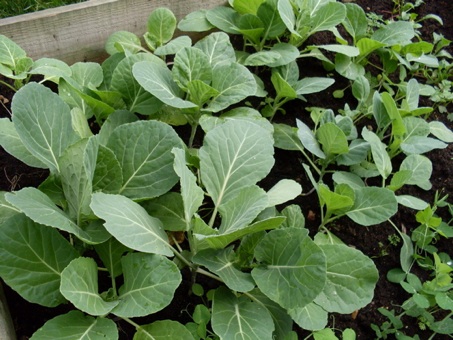There’s nothing better than homegrown spring cabbages, picked and cooked on the same day.
Spring Cabbages like to grow in good fertile soil and a sunny or partly sunny site.
The ground needs to be dug over and have manure and compost added so it. Then you can plant your cabbages into this.
Alternatively, you could apply Growmore or chicken manure pellets a week or two before planting if the soil is overworked or not very good. This will also work well.
Sowing spring cabbage
You can either spring cabbage in a seedbed or in trays or cell trays. Fill the trays or pots up with compost, water the compost, and then scatter your chosen seed in there, cover lightly with some compost. Water when the compost looks dry. When the seeds have germinated and the seedlings are 2” tall – thin them out, by pulling some of the seedlings out and then transplanting these into other pots or trays that are filled with compost. This allows the plants to have some space and to grow bigger.

When the spring cabbage plants are around 4” tall they can be carefully dug up and planted into their final growing positions. Plant them around 10” apart. Water the young plants well to make sure they get established.

Spring Cabbages – Pests
Cabbage white butterfly – The summer is the peak time for pests especially the cabbage white butterfly. Be vigilant for cabbage white butterflies, both the small and large white. Look for yellow eggs on the underside of the cabbage leaves. Remove these with your thumb and finger as otherwise, they will hatch into caterpillars. And caterpillars will destroy your plants. It’s quite wise to invest in some Micromesh or Enviromesh to protect your cabbages

Whitefly – will be obvious when you see clusters of whitefly sticking together. You can spray them with soapy water or hose them off with the hosepipe.
Club root – is an infection of the roots that is common in some soils and is often found in damp summer and autumn which can bring on symptoms of this disease. The roots have large swellings and look distorted and this will cause the plant to grow much smaller than normal.
A sign of clubroot is if your cabbages wilt in hot weather although they’ve had water – there is usually then a problem at the roots and it most probably is club root. Pull the plants up and burn them or take them to the local tip.









